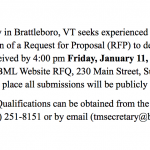Tech News: Avast Antivirus Sold Client Info
This issue is simply not getting the press it deserves:
https://www.cbsnews.com/news/ftc-avast-browsing-data-privacy/
By definition, your AV [antivirus] needs to not only track every browser request, it needs to track every executable invoked while the AV is running. Any AV worth its salt would aggregate all this information, at least for the purpose of addressing new issues ASAP.










